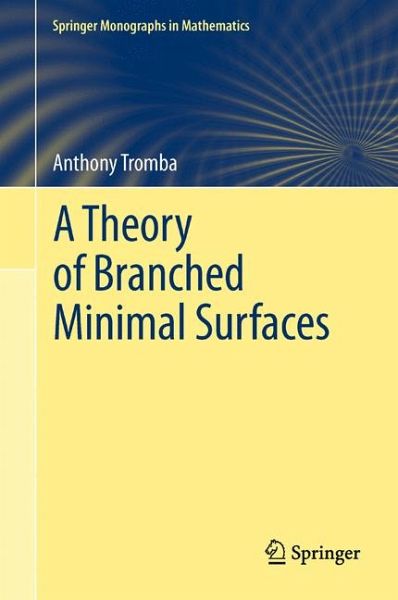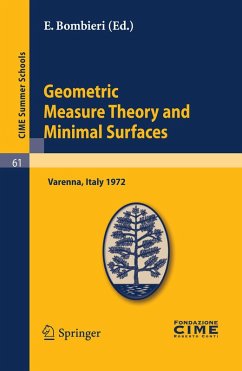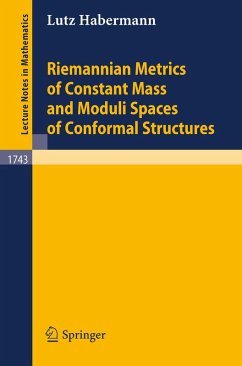
A Theory of Branched Minimal Surfaces (eBook, PDF)
Versandkostenfrei!
Sofort per Download lieferbar
40,95 €
inkl. MwSt.
Weitere Ausgaben:

PAYBACK Punkte
20 °P sammeln!
One of the most elementary questions in mathematics is whether an area minimizing surface spanning a contour in three space is immersed or not; i.e. does its derivative have maximal rank everywhere.The purpose of this monograph is to present an elementary proof of this very fundamental and beautiful mathematical result. The exposition follows the original line of attack initiated by Jesse Douglas in his Fields medal work in 1931, namely use Dirichlet's energy as opposed to area. Remarkably, the author shows how to calculate arbitrarily high orders of derivatives of Dirichlet's energy defined o...
One of the most elementary questions in mathematics is whether an area minimizing surface spanning a contour in three space is immersed or not; i.e. does its derivative have maximal rank everywhere.
The purpose of this monograph is to present an elementary proof of this very fundamental and beautiful mathematical result. The exposition follows the original line of attack initiated by Jesse Douglas in his Fields medal work in 1931, namely use Dirichlet's energy as opposed to area. Remarkably, the author shows how to calculate arbitrarily high orders of derivatives of Dirichlet's energy defined on the infinite dimensional manifold of all surfaces spanning a contour, breaking new ground in the Calculus of Variations, where normally only the second derivative or variation is calculated.
The monograph begins with easy examples leading to a proof in a large number of cases that can be presented in a graduate course in either manifolds or complex analysis. Thus this monograph requires only the most basic knowledge of analysis, complex analysis and topology and can therefore be read by almost anyone with a basic graduate education.
The purpose of this monograph is to present an elementary proof of this very fundamental and beautiful mathematical result. The exposition follows the original line of attack initiated by Jesse Douglas in his Fields medal work in 1931, namely use Dirichlet's energy as opposed to area. Remarkably, the author shows how to calculate arbitrarily high orders of derivatives of Dirichlet's energy defined on the infinite dimensional manifold of all surfaces spanning a contour, breaking new ground in the Calculus of Variations, where normally only the second derivative or variation is calculated.
The monograph begins with easy examples leading to a proof in a large number of cases that can be presented in a graduate course in either manifolds or complex analysis. Thus this monograph requires only the most basic knowledge of analysis, complex analysis and topology and can therefore be read by almost anyone with a basic graduate education.
Dieser Download kann aus rechtlichen Gründen nur mit Rechnungsadresse in A, B, BG, CY, CZ, D, DK, EW, E, FIN, F, GR, HR, H, IRL, I, LT, L, LR, M, NL, PL, P, R, S, SLO, SK ausgeliefert werden.













